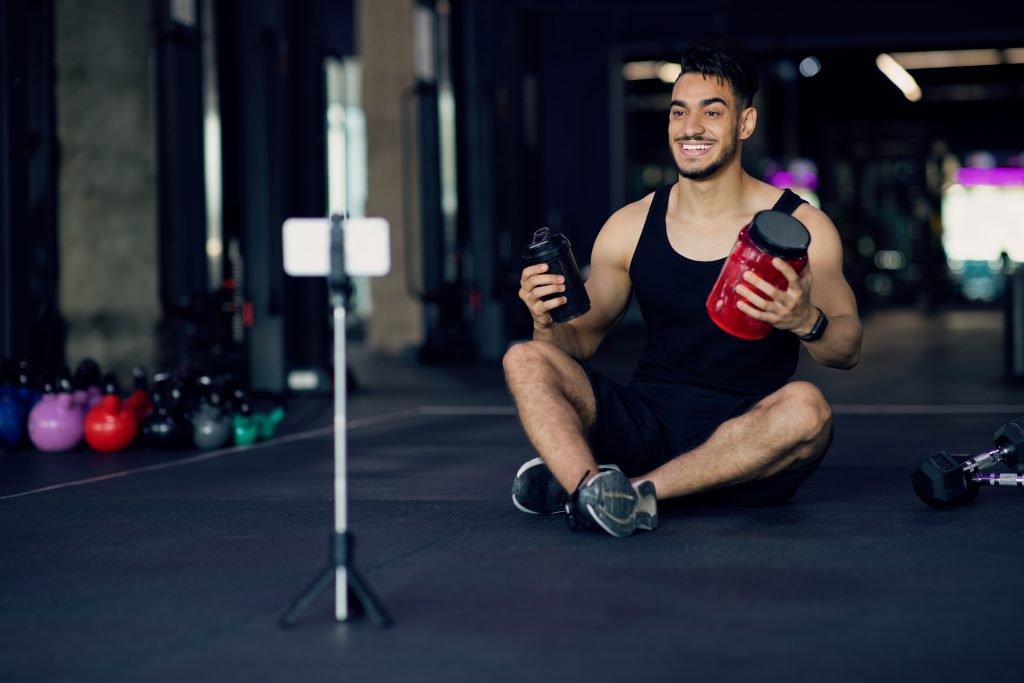
Boost Your Performance With The Best Sports And Fitness Blogs For Athletes
Are you an athlete looking to improve your performance? The key to reaching your full potential may lie in the wealth of knowledge available on sports and fitness blogs. With so many options out there, it can be overwhelming to find the best ones suited to your needs.
In today’s digital age, athletes have access to a vast array of information at their fingertips. Sports and fitness blogs have become a valuable resource for athletes of all levels, providing expert advice, training tips, and inspiration. However, not all blogs are created equal, and finding the ones that truly deliver can be a challenge.
To help you navigate the sea of sports and fitness blogs, we have compiled a list of the best ones that are guaranteed to boost your performance. Whether you’re a professional athlete or just starting out, these blogs will provide you with the latest insights, strategies, and motivation to take your game to the next level. Get ready to elevate your performance and achieve your athletic goals with the help of these top-notch blogs.
Benefits of Reading Sports and Fitness Blogs for Athletes
Sports and fitness blogs can be a valuable resource for athletes looking to enhance their athletic performance. By reading these blogs, athletes can benefit in several ways.
Firstly, blogs provide a wealth of information on training strategies. Athletes can learn about different workout routines, exercises, and training methods that can help them optimize their performance. They can also gain knowledge on how to improve their strength, endurance, and speed through targeted training plans. Furthermore, blogs often offer advice on injury prevention, providing athletes with valuable tips and techniques to minimize the risk of getting injured during their training sessions or competitions.
Secondly, blogs cover a wide range of topics related to nutrition. Athletes can access information on the best foods to fuel their bodies, the importance of specific nutrients, and the role of hydration in performance. They can also learn about the benefits of different supplements and understand how to incorporate them into their diet to enhance their athletic performance. By following the nutrition advice provided in these blogs, athletes can optimize their energy levels, support muscle growth and repair, and improve their overall physical well-being.
Another benefit of reading sports and fitness blogs is the opportunity to gain insights from professional athletes. These blogs often feature articles and interviews with elite athletes, sharing their training regimens, strategies, and experiences. Reading about the routines and challenges of professional athletes can provide inspiration and motivation for amateur athletes looking to improve their skills. It can also offer valuable insights into the mindset and dedication required to achieve success in their chosen sport.

Athletic Performance
When it comes to athletic performance, every athlete strives to reach their peak potential. This requires a combination of physical training, proper nutrition, and mental focus. In order to achieve optimal performance, athletes can benefit from the guidance and expertise provided by sports and fitness blogs. These blogs offer a wealth of information on training strategies, helping athletes improve their strength, endurance, and speed. They also cover a wide range of topics related to nutrition, offering advice on the best foods, nutrients, and supplements to fuel the body for peak performance. Additionally, reading blogs featuring insights from professional athletes can inspire and motivate amateur athletes to push their limits and achieve their goals. By utilizing the valuable resources and knowledge found in these blogs, athletes can enhance their athletic performance and excel in their chosen sports.
What is Athletic Performance?
Athletic performance is the measure of an athlete’s ability to excel in their chosen sport or physical activity. It encompasses a wide range of skills, including strength, speed, agility, endurance, and coordination. The importance of athletic performance cannot be overstated, as it often determines an athlete’s success in competitive sports.
It is important to note that athletic performance should not be confused with athletic ability. While athletic ability refers to an individual’s inherent physical attributes, such as height, body composition, and natural talent, athletic performance goes beyond these factors. It is a culmination of an athlete’s ability to maximize their potential through training, nutrition, and recovery.
Several factors influence an athlete’s performance. Genetics play a significant role, as they determine an individual’s physiological makeup and potential for certain athletic abilities. However, proper nutrition, training techniques, and adequate recovery also play a vital role in enhancing athletic performance.
Nutrition is essential for providing the necessary energy and nutrients to support physical activity, while optimized training programs help develop the specific skills required for a particular sport. Additionally, adequate recovery time allows the body to repair and grow, improving overall performance.
Factors that Impact Athletic Performance
Athletic performance is determined by a multitude of factors that extend beyond natural ability and training. Lifestyle choices, stress management, sleep, nutrition, and motivation all play a critical role in an athlete’s ability to reach their full potential.
Lifestyle choices encompass various behaviors that can either positively or negatively affect athletic performance. Engaging in regular exercise, avoiding harmful substances like alcohol and tobacco, and maintaining a healthy weight are all examples of favorable lifestyle choices.
Stress management is another crucial aspect. High stress levels can impair performance by hindering focus and increasing the risk of injury. Implementing stress-reduction techniques such as deep breathing exercises, meditation, and mindfulness has been shown to improve athletic performance.
Getting adequate sleep is crucial for optimal athletic performance. Sleep deprivation can negatively impact reaction time, decision-making, and muscle recovery. Research has consistently demonstrated that individuals who consistently get enough sleep exhibit improved performance in physical activities.
Nutrition is of utmost importance for providing the required energy and nutrients to support physical activity. Consuming a well-balanced diet that includes carbohydrates, proteins, and healthy fats is essential for peak performance. Research supports the importance of proper nutrition in areas such as muscle repair, growth, and overall physical performance.
Motivation serves as the driving force behind an athlete’s commitment and dedication. Intrinsic motivation, fueled by personal aspirations and enjoyment of the sport, is more likely to result in consistent effort and improved performance.
Training Strategies to Improve Athletic Performance
Training strategies play a vital role in enhancing athletic performance. One key aspect is setting clear and specific goals. By identifying specific targets, athletes can create a roadmap and measure progress along the way.
A periodized training plan is crucial for optimizing performance. This involves dividing the training into specific phases, each with different focuses and intensities. By gradually increasing the demands and allowing for recovery, athletes can maximize their progress and reduce the risk of overtraining.
Developing sport-specific skills is another critical strategy. By honing the specific skills required for their sport, athletes can become more efficient and effective in their movements. This can involve drills, practice sessions, and working with coaches to improve technique and performance.
Strength and conditioning training is essential for athletes to build muscle strength and overall fitness. This can include activities such as weightlifting, plyometrics, and circuit training. By increasing strength and power, athletes can improve their performance in various athletic movements.
Mental preparation and visualization are valuable tools for enhancing athletic performance. By mentally rehearsing and visualizing successful performances, athletes can increase confidence, focus, and motivation. Techniques such as positive self-talk, goal visualization, and mindfulness exercises can contribute to peak performance.
By implementing these training strategies, athletes can optimize their athletic performance and work towards their goals. It’s important to remember that individualization and consistency are key, as each athlete’s needs and abilities may vary.
Professional Athletes and Their Training Regimens
Professional athletes follow rigorous training regimens to optimize their athletic performance. These regimens incorporate a variety of exercises and techniques designed to enhance strength, endurance, speed, and agility.
In terms of workouts, professional athletes engage in a combination of cardiovascular exercises and strength training. Cardiovascular exercises, such as running, swimming, or cycling, improve endurance and cardiovascular fitness. Strength training involves using weights, resistance bands, or bodyweight exercises to build muscle strength and power.
Professional athletes typically have a well-structured training schedule that includes both on-season and off-season training periods. During the on-season, their training focuses on maintaining their peak performance levels. This involves incorporating sport-specific drills, practice sessions, and scrimmages into their routines. Off-season training is geared towards building strength, addressing weaknesses, and rehabilitating any injuries.
Recovery is a critical component of training regimens for professional athletes. They utilize various recovery strategies such as ice baths, massage therapy, and active recovery workouts. Adequate rest periods and sleep are crucial for repairing muscles and preventing overtraining.
Overall, professional athletes follow carefully curated training regimens that target their specific athletic demands. By combining various exercises, adhering to strict schedules, and prioritizing recovery, they continually optimize their physical abilities to achieve peak performance.
Peak Performance for Amateur Athletes
Amateur athletes can achieve peak performance by implementing effective training strategies, nutrition plans, and recovery techniques. To begin, setting specific performance objectives is crucial. By clearly defining their goals, athletes can create a focused plan to improve their skills and overall performance.
Tracking progress is essential in ensuring continuous improvement. Regularly assessing performance metrics such as speed, endurance, or strength allows athletes to identify areas in need of enhancement. With this information, they can adjust their training programs accordingly to target specific weaknesses and optimize their progress.
Proper nutrition plays a vital role in enhancing performance. Athletes should focus on incorporating nutrient-rich foods into their diet. This includes consuming adequate complex carbohydrates for sustained energy during exercise and muscle repair. Additionally, a balanced intake of protein is essential for muscle growth and recovery. Incorporating a variety of fruits, vegetables, and lean proteins can supply essential vitamins, minerals, and antioxidants to support overall health and athletic performance.
Not to be overlooked, recovery is just as important as training itself. Adequate rest and sleep are pivotal for optimal recovery and muscle repair. Athletes should prioritize regular rest periods and aim for quality sleep to prevent overtraining and promote overall well-being.
By implementing effective training strategies, following a well-balanced nutrition plan, and prioritizing recovery, amateur athletes can maximize their potential and achieve peak performance.

Risk of Injury & Range of Motion
In the world of sports and fitness, athletes are constantly pushing their bodies to achieve peak performance. However, with intense physical activity comes the risk of injury. Understanding the potential risks and taking proactive measures to mitigate them is crucial for athletes to maintain their training momentum and stay in optimal shape. One important factor to consider is the range of motion. Having a good range of motion allows athletes to move their joints and muscles freely and effectively, reducing the risk of muscle imbalances, strains, and sprains. It also allows for better technique and form, which can contribute to overall athletic performance. By prioritizing injury prevention strategies and incorporating exercises that improve range of motion, athletes can minimize their risk of injury and maximize their potential for success.
The Relationship between Injury Risk and Range of Motion
The relationship between injury risk and range of motion is crucial for athletes to understand in order to optimize their performance and minimize the likelihood of sustaining injuries during physical activity. Range of motion refers to the degree to which a joint can move and is essential for athletes as it directly affects their ability to move efficiently and effectively.
Limited range of motion has been shown to increase the likelihood of sustaining injuries during physical activity. When an athlete has restricted movement in a particular joint, such as tightness in the hip or shoulder, it compromises their ability to move freely and may result in compensatory movements or altered biomechanics. These compensations can place excessive stress on other structures, increasing the risk of injury.
Scientific evidence supports the notion that limited range of motion can lead to injury. A study published in the Journal of Strength and Conditioning Research found that athletes with decreased hip flexibility had a higher incidence of lower limb injuries. Another study published in the Journal of Sports Science and Medicine reported that limited range of motion in the shoulder was associated with a higher risk of shoulder injuries in overhead athletes.
To mitigate the risk of injury, athletes should prioritize improving their range of motion through regular stretching and mobility exercises. By increasing flexibility and joint mobility, athletes can maintain proper alignment and reduce the strain placed on their bodies during physical activity.
Exercises to Enhance Range of Motion and Reduce Injury Risk
Enhancing range of motion and reducing the risk of injury are crucial aspects of athletic performance. Fortunately, there are a variety of exercises athletes can incorporate into their training routines to achieve these goals.
Dynamic stretching exercises are a great way to increase range of motion and improve flexibility. These exercises involve moving through a full range of motion while actively stretching the muscles. Examples include arm circles, walking lunges, and leg swings. Dynamic stretching not only improves flexibility but also helps prepare the body for physical activity by promoting blood flow and warming up the muscles.
Yoga poses are another effective way to enhance range of motion and reduce the risk of injury. Poses such as Downward Dog, Warrior I, and Triangle pose target different muscle groups, elongating and stretching them in various directions. Yoga also promotes balance, body awareness, and stability, all of which contribute to injury prevention.
Incorporating mobility drills into a training routine is also beneficial. These drills specifically target joint mobility and stability, allowing for smoother and more controlled movements. Examples include hip airplanes, scapular wall slides, and ankle circles. By enhancing joint mobility, athletes can move more efficiently and reduce the strain placed on their muscles and ligaments.
Tips from Professional Athletes on Safety in the Gym or Outdoors
Safety is of utmost importance for athletes, whether they are working out in the gym or outdoors. In order to prevent injuries and ensure a safe workout environment, it is essential to follow some important tips from professional athletes.
First and foremost, proper form is crucial. Professional athletes emphasize the importance of using correct technique when performing exercises. This not only maximizes results but also reduces the risk of injury. It is advisable to seek guidance from a trainer or coach to learn the proper form for different exercises.
Additionally, a thorough warm-up is vital before starting any workout. Professional athletes recommend incorporating dynamic stretching exercises to increase range of motion and warm up the muscles. This helps to prepare the body for physical activity and prevents injuries.
Another important aspect is wearing appropriate protective gear. Whether it’s a helmet, knee pads, or shin guards, professional athletes stress the significance of using protective gear to prevent injuries during high impact sports or exercises.
Lastly, listening to your body is crucial in avoiding overexertion and pushing beyond your limits. Professional athletes emphasize the importance of taking breaks when needed and not ignoring signs of fatigue or pain. Rest and recovery are equally important as training itself.
You can check https://ffools.com/ for more details about sports and fitness blogs catered specifically for athletes, providing a wealth of insights, training tips, and news tailored to elevate their performance and well-being.

Conclusion
In conclusion, fueling the body with the right nutrition is essential for optimizing athletic performance and preventing injuries. Eating a balanced diet that includes a variety of nutrient-dense foods is crucial for providing the body with the energy and nutrients it needs to perform at its best. It is important to focus on consuming complex carbohydrates for sustained energy, adequate protein for muscle repair and growth, and healthy fats for overall health and performance. Additionally, staying hydrated and fueling before, during, and after workouts or competitions is vital for optimal performance. By prioritizing proper nutrition, athletes can enhance their athletic performance, enhance recovery, and reduce the risk of injuries, allowing them to reach their full potential on and off the field or court.


